Bacteria Dyes¶
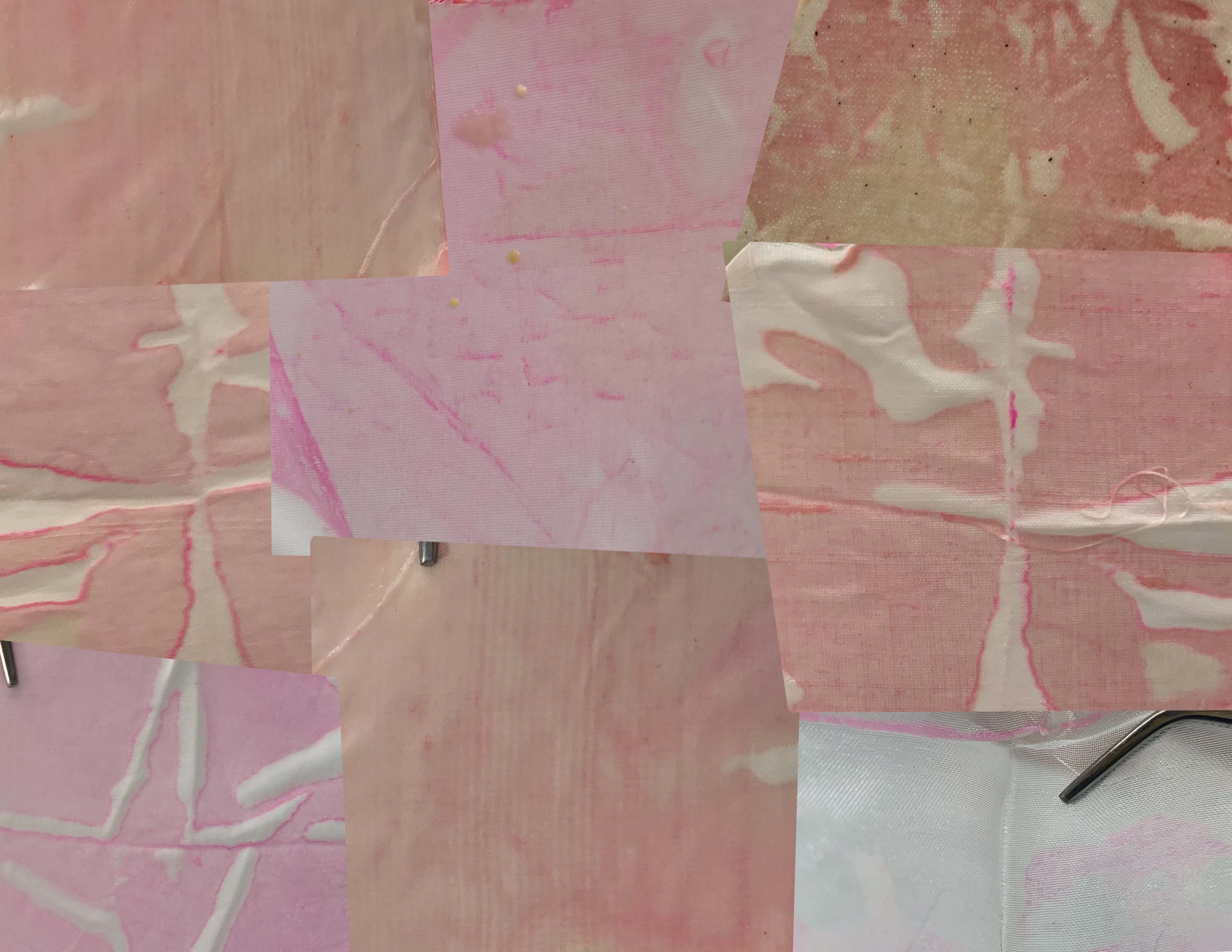
The textile dying process is one of the most polluting processes in the world. Chemical dyes are used until the color is no longer consistent, then the liquid chemical dye is thrown away, with little regard to where it goes and the harm that it creates. It is an unsustainable and toxic process. Due to high demand and fast fashion, little is being done to disrupt this harmful cycle.
We have a plague on our society of consumer capitalism, with predictable and obedient consumers. Fast fashion is a product of this plague, where clothing is meant to only last for one season and then expire as the trend expires. This has created an uncontrollable amount of textile waste. In 2014 the United States alone produced 32.44 Billion pounds of textile waste.
I propose to redefine the fast fashion industry by creating a sustainable relationship between humans and clothing, using bacteria dyes to create safer and superior dyes. Creating clothing that gives back to the wearer in color, equal to the amount of care it receives. Be kind to your clothing, be kind to your planet.
Process¶
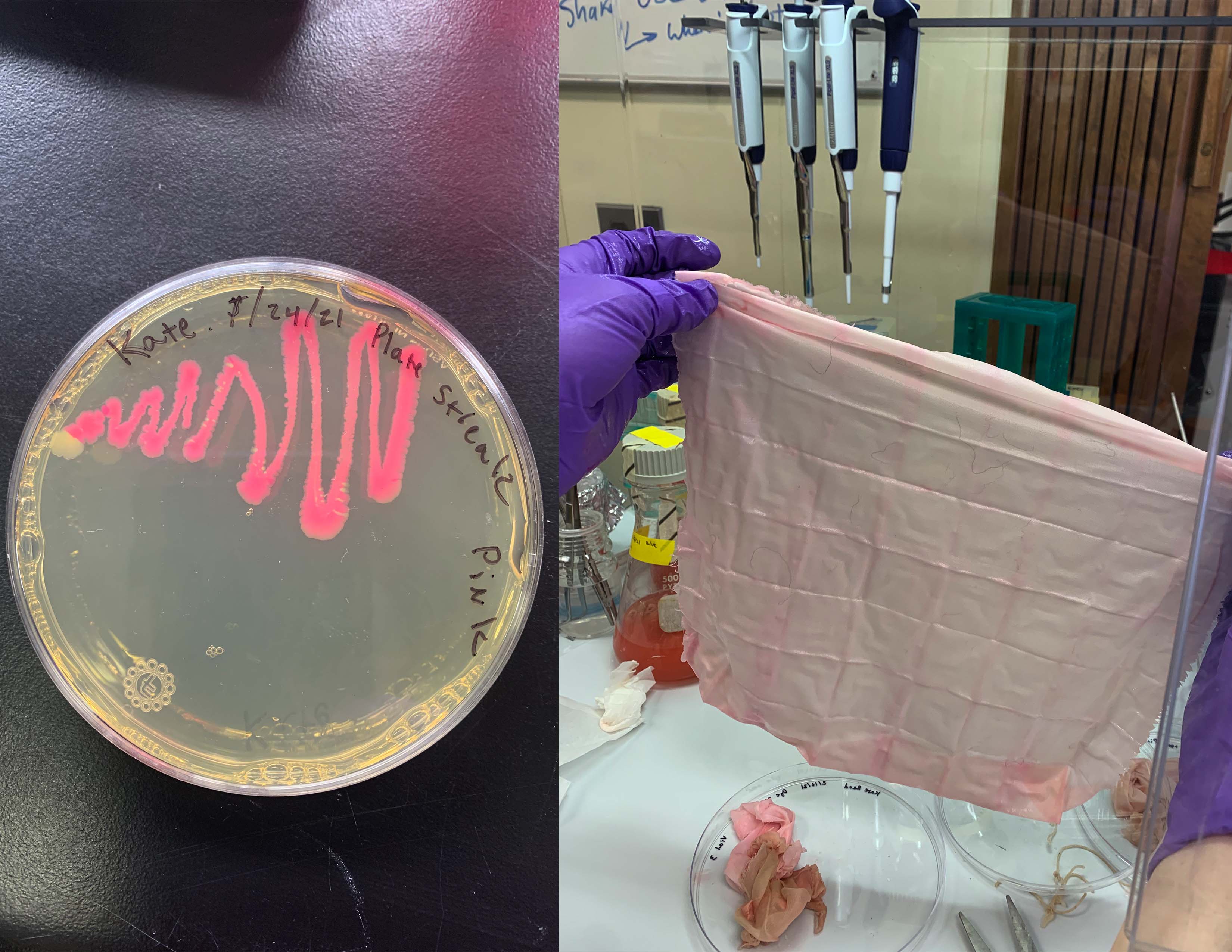
I am working with synthetic e.coli in attempts to create a new relationship between textile and bacteria. I first tested which textile fibers would be the most successful for bacteria dying and I cut samples of cotton, silk, lycra, and many more miscellaneous synthetic fibers. I autoclaved them to sterilize them and then dipped them in a pink e.coli broth. I then laid each textile in an agar petri dish to grow over the next few days.
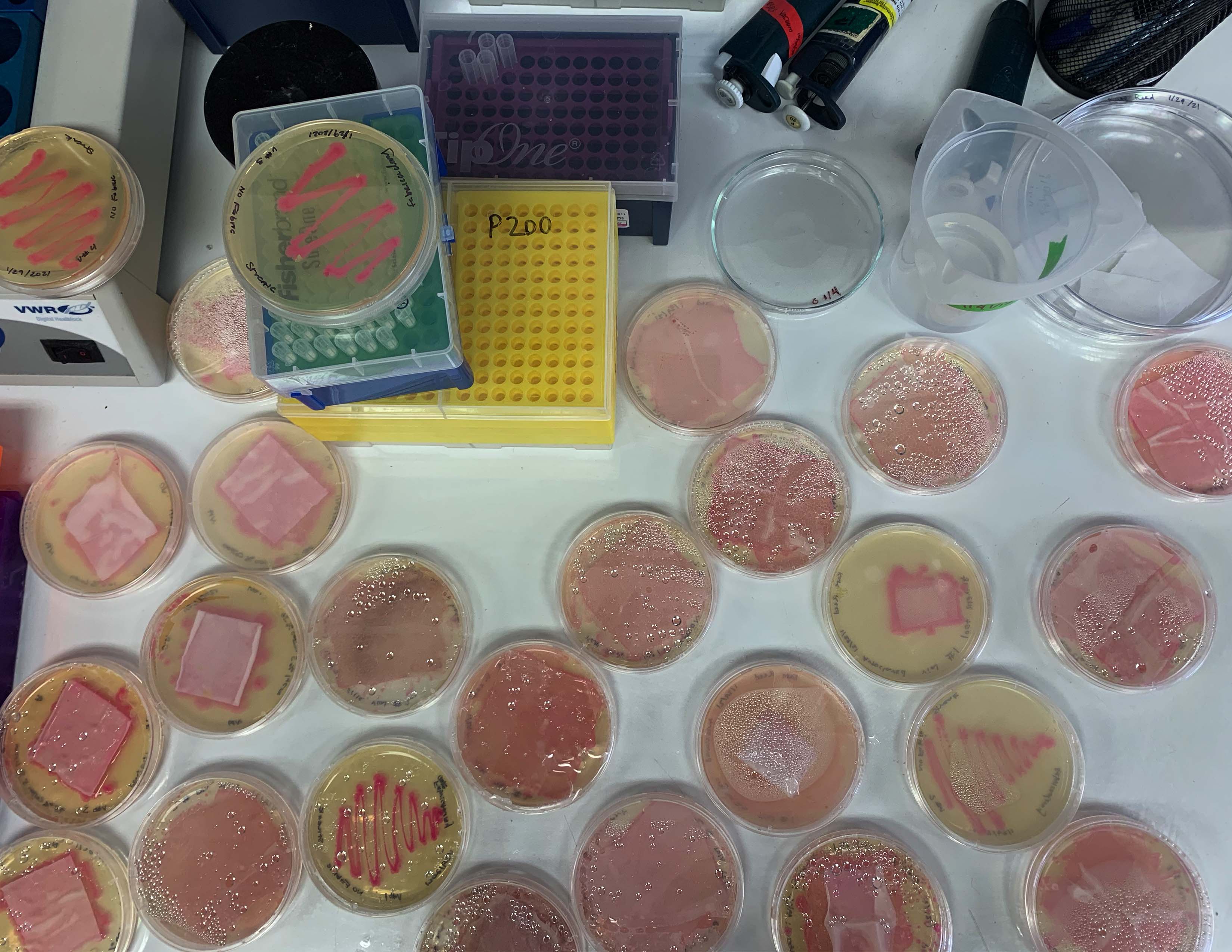
When I came back 5 days later, the bacteria looked magnificent on each of the fibers and seemed to dye each one equally well. Next it was time to inoculate the bacteria so that we would be able to take the dyed textiles out of the lab and into the real world. We put a few swatches in the autoclave and left a few under a UV light to kill the bacteria.
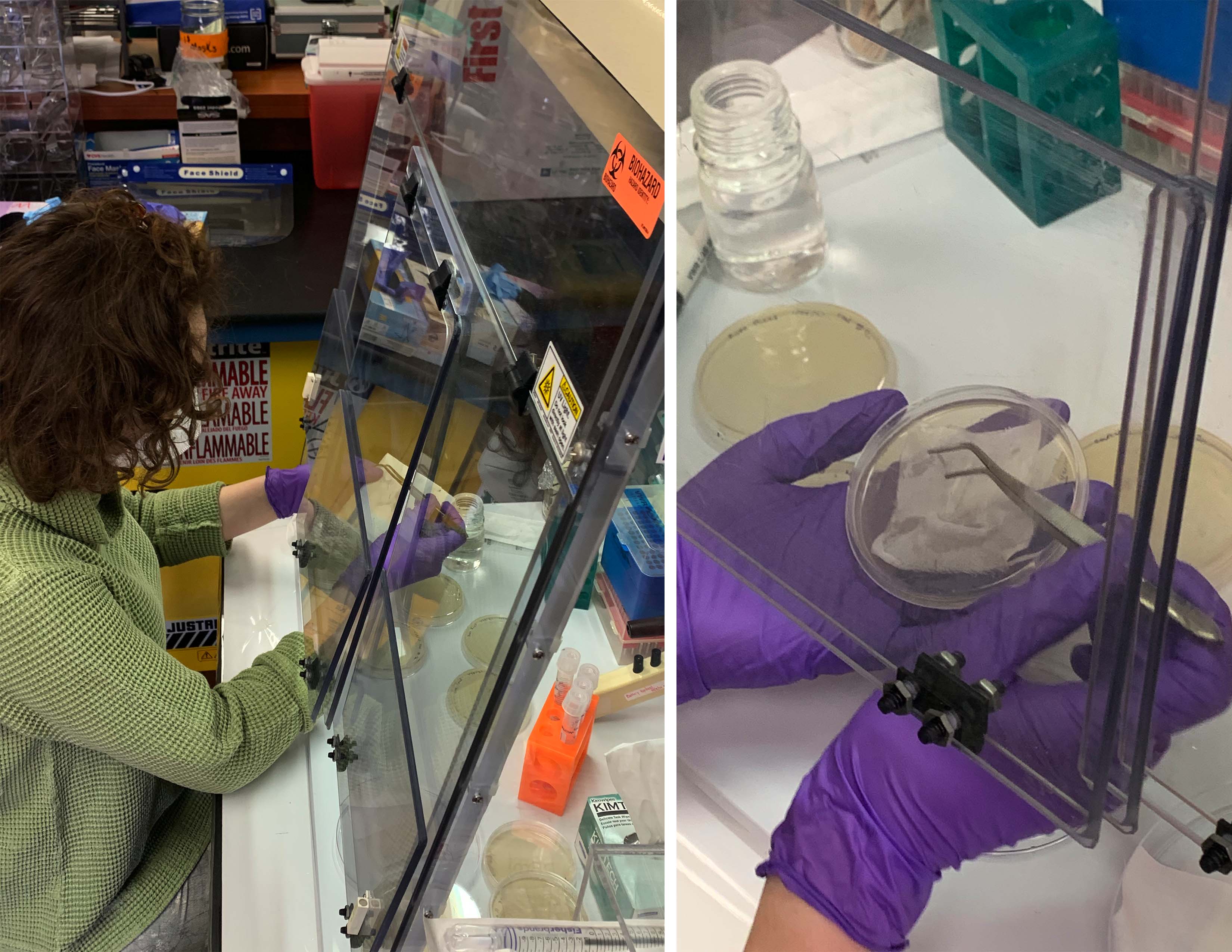
While the color stayed beautifully for the UV light samples, unfortunately, after doing a streak test with the UV light samples, the bacteria was still very much alive. This meant that killing the bacteria with UV light was not a reliable option.
The autoclave samples were similarly a disappointment, as the autoclave had washed all of the color away, and left us with a tan textile.

For our next batch of textile experiments we decided to soak the textiles for many days in the bacteria broth, hoping this would allow for a more even distribution of bacteria. In addition to simple samples, I also tried some Shibori dying techniques, where I folded the fabric to create different patterns when dyed.
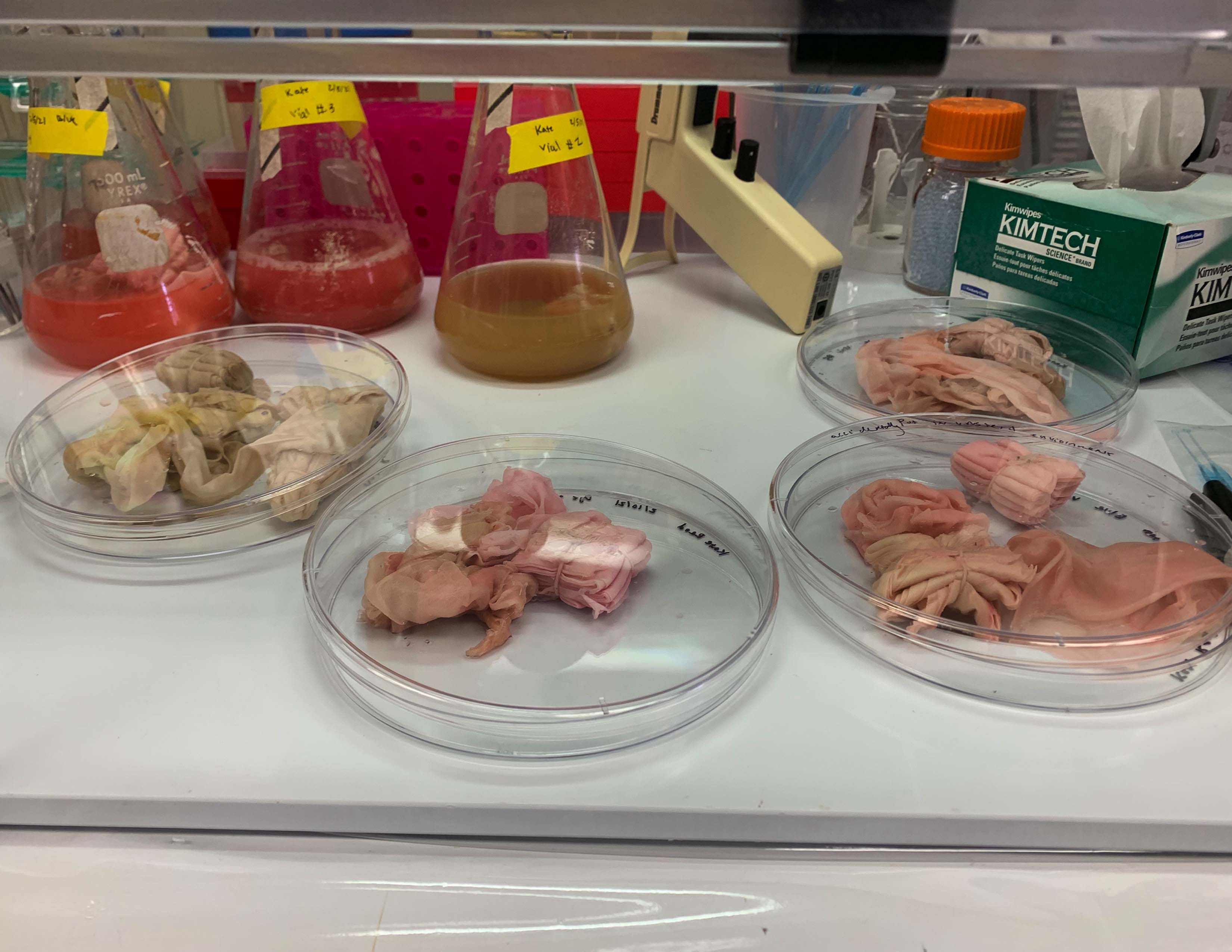
When I came back a few days later the textiles dyed consistently, but the colors seemed muted compared to the agar plate dying from the last test. The Shibori dying bundles did not come out particularly clearly. We decided to let the textile samples dry out in the incubator before trying to inoculate the bacteria.